Can You Paint a Pool Table? What Kind of Paint Can Be Use?
Can you paint a pool table? Fortunately yes, the task can be done if you use special types of paint-like chalk and spray paint formulated to adhere to the table felt and provide a smooth, ... Read more The post Can You Paint a Pool Table? What Kind of Paint Can Be Use? appeared first on Arthitectural.
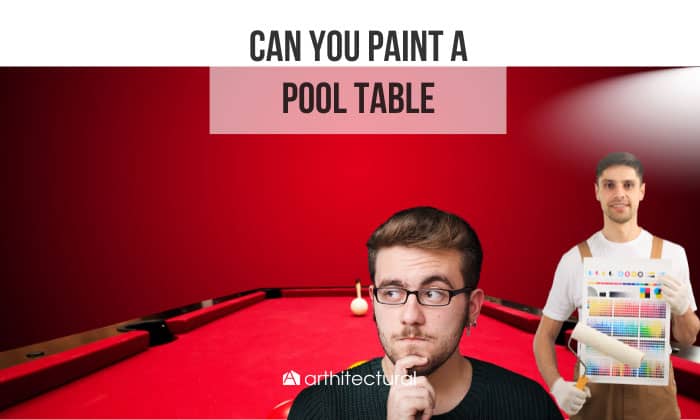

Can you paint a pool table? Fortunately yes, the task can be done if you use special types of paint-like chalk and spray paint formulated to adhere to the table felt and provide a smooth, even playing surface.
Below are the tools and descriptions of recommended paints, as well as detailed methods for preparing surfaces until your pool table makeover is completed.
Types of Paint You Can Use on Pool Table
Choosing the right type of paint for the pool table is crucial in balancing aesthetic view and functionality. Using the wrong paint can change the texture of the table felt and could lead to costly repairs. Hence, deciding what paint to use must be considered seriously.
When painting a pool table, you want to ensure the best paint that maintains the integrity of the playing surface. And you can only have these by following the pool table paint ideas recommended by experts.
Here are the type of paints recommended for pool table:
1. Chalk paint
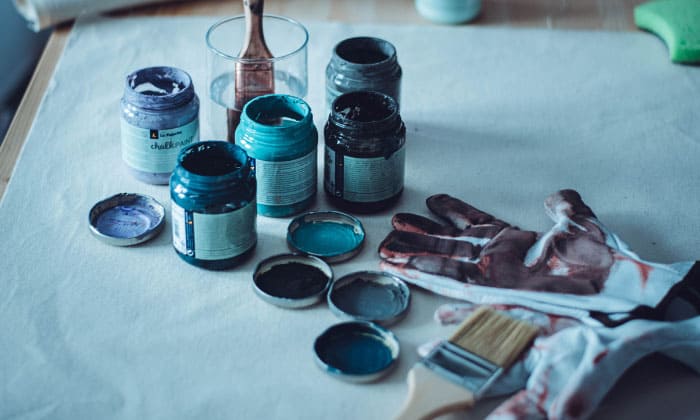
Chalk paint is a decorative paint that brings forth matte and chalky finish. Its composition allows it to be used for a myriad of furniture surfaces and decorations. Chalk paint is the most recommended type of paint for pool tables especially on the felt for several reasons like:
- Color Saturation
A chalk-painted pool table will have a highly pigmented color. The chalk provides excellent coverage to pool slate and other parts in just one or two coats. It requires no primer for it to stick nicely on surfaces.
- Versatile
This paint has the ability to adapt to any surfaces including wood and cloth. That said, it perfectly fits a pool table which uses both the mentioned materials.
- Water-based
It is quick to dry and requires minimum preparation. Since this paint is water-based it is easily cleaned up with soap and water. It also emits low-odor since no other adverse solution is mixed over it.
2. Spray Paint
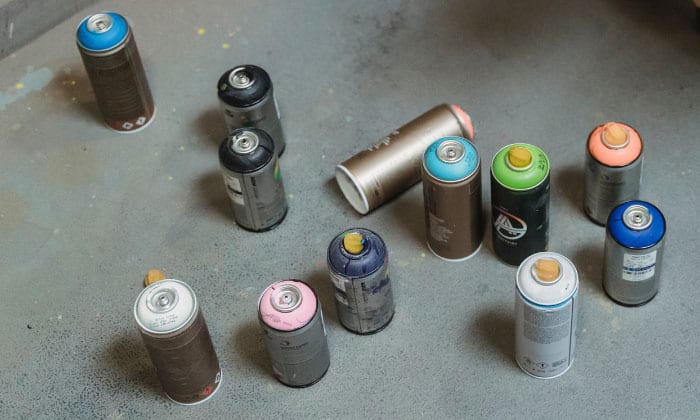
You may also use spray paint for pool table refinishing. This is ideal for painting the roundabout structure of the pool table.
However, it may be a bit harder to apply than how it looks since it requires consistency and control in the painting’s movement. When the spray movement is not steady, it causes uneven distribution of paint on the pool surface.
Preparation Steps: How to Properly Clean Pool Table
Ideally, the pool table needs to be cleaned before every game. Particularly, the table felt which serves as the catch basin of spilled food and drink, particles of cue chalk, stray hairs, and dirty hands, as well as the pocket, and the rails.
This ensures that any particles which may hinder the smooth sailing of pool balls on the table felt are removed. Moreover, this task also helps you assess the literal physical condition and overall state of the pool table.
What you need:
- Billiard brush
- Halfmoon rail brush
- Microfiber cloth
- Wood cleaner products
- Water
1. Remove Dust and Debris
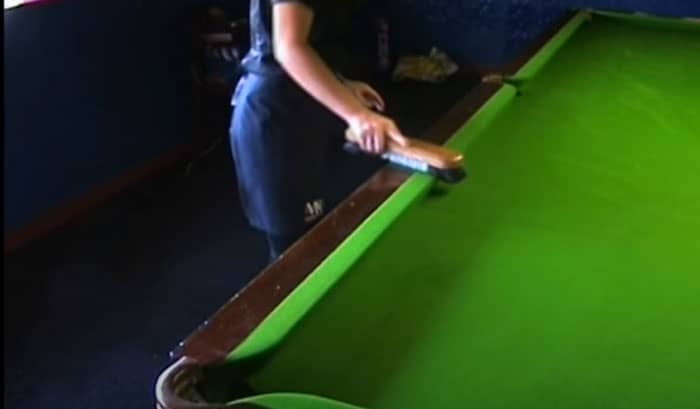
Start brushing the top of the rail from one end using the long soft bristled Adhafera billiard brush. Brushing must follow the direction of the cushion nap all the way to the length’s end of the pool table.
2. Dust Underneath the Cushion
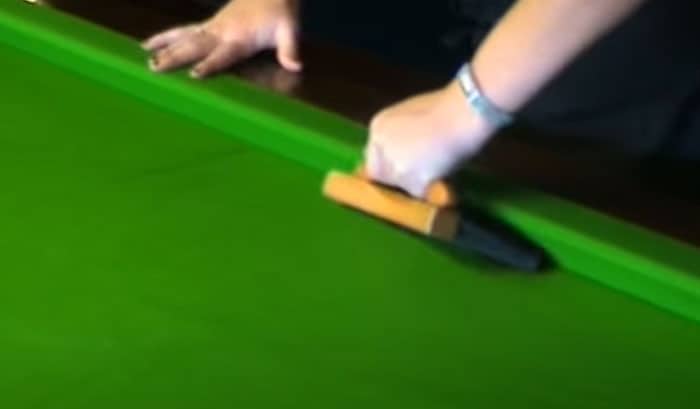
Use the crescent shaped Halfmoon rail brush to reach underneath the cushion. Flick the dust forward with short firm strokes continuously to the direction of the nap.
3. Brush the Main Bed of the Table
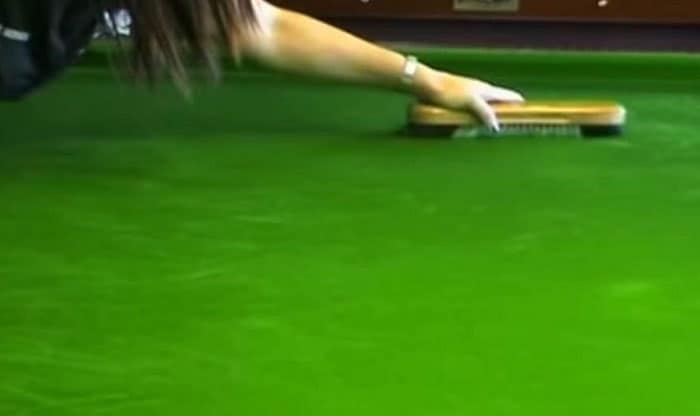
Again, with firm short strokes, sweep the playable surface using the long billiard brush to kick off the dirt. Apply enough force while brushing so that the table felt won’t tear in case there are large grains of dirt on the playing surface.
This is done easier by doing half of the table at a time.
Brush slowly from the back end to the other side of the table, again following the nap direction.
- Note: It is not advisable to make a long sweep down the surface as it only causes the dirt to be pressed down the cloth and not flicked forward.
4. Clean off the Gathered Dust and Dirt
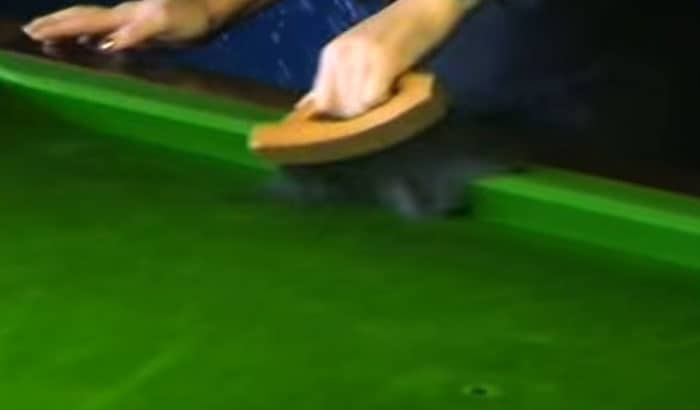
By this time, all of the dirt should be gathered at one end of the table. Use the Halfmoon rail brush to collect them on one of the pool pockets.
Then, use the long billiard brush to remove the gathered dust on the pool pocket net.
5. Clean the Pocket
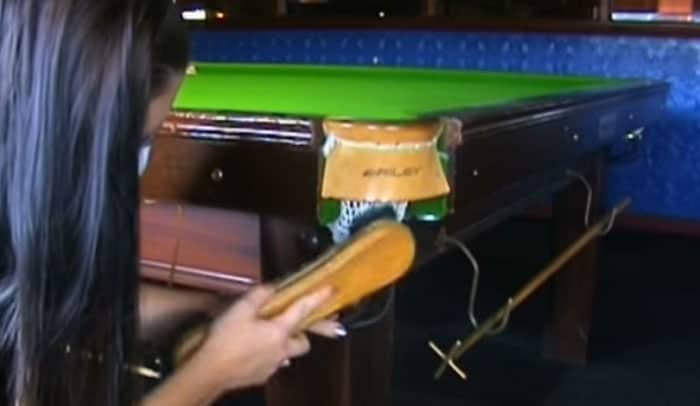
Using the billiard brush, clean the rim and roundabout of the pool table pocket and net to kick off the trapped dust.
6. Nap the Playable Surface
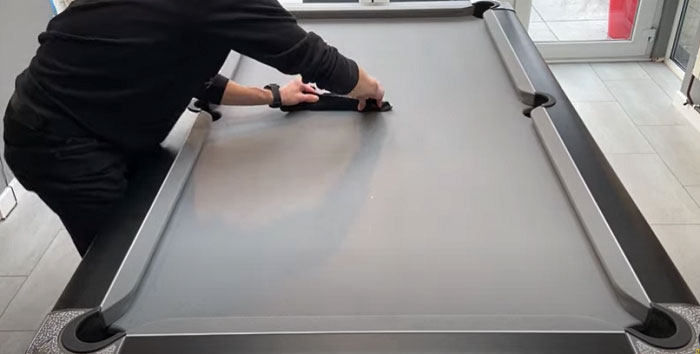
Remove the remaining dust left from the table felt, at the same time, flatten the surface by napping. Wrap a woolen pool cloth on the billiard brush.
Use the back part of the covered brush to run over the table’s surface felt, following the nap direction.
7. Clean-off the Surround of the Pool Table
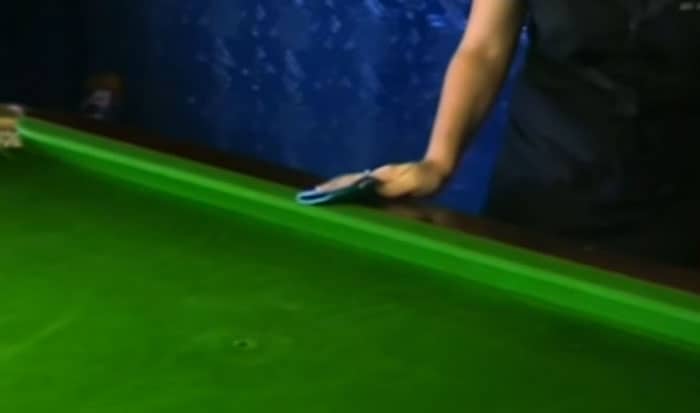
Use a damp microfiber cloth to smoothen and clean-off dust that subsided on the rails after the brushing process.
8. Remove Stains
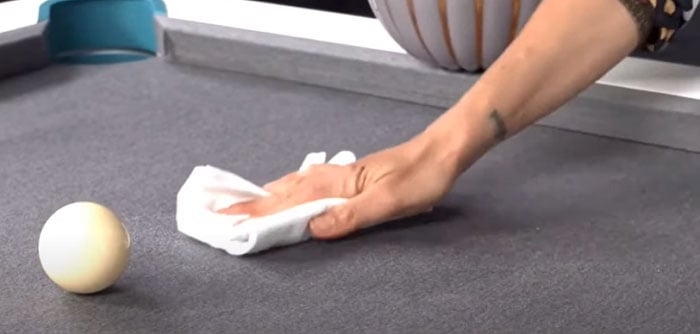
In the case of liquid spillage or stain on the pool table, use a microfiber cloth and warm water to blot it out. Do not rub! Just gently press the dump cloth lightly directly on the spilled drinks so that the microfiber cloth absorbs the liquid. Wash the cloth in warm water and repeat the process if necessary.
How to Paint a Pool Table
Pool table deteriorates over time but it does not mean it cannot be renovated to have a brand new look again. You can resurface a pool table, using chalk paint to save time and effort in major sanding and priming.
What you need:
- A screwdriver
- Spackling compound
- Sanding pads
- Cloths
- Sander de-glosser liquid
- Chalk paint
- Paint brush
- Gloves
Here are the steps on how to repaint old pool table:
1. Disassemble the Pool Table Parts
Start by unscrewing the railings and unbolting the bumpers on all sides of the table, followed by removing the felt, and slate with caution.
2. Fill in Cracks
Check the disassembled pool table part and fill-in knots and cracks with spackling compound or recommended wood filler to level the surface.
3. Sand the Surface
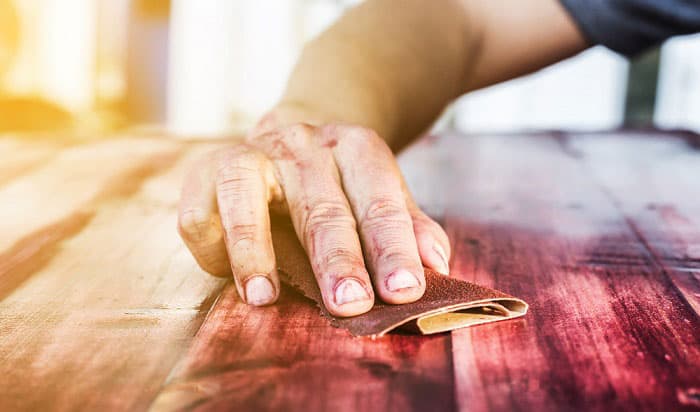
Sand uneven surface after the spackle or wood filler dried to have a flat surface. Then, wipe down every part to remove debris in preparation for the painting process.
For a laminated pool table, it is necessary to wipe it with a sander de-glosser liquid and a sanding pad to diminish the gloss of the varnish from the surface. This allows the paint to stick nicely to the wood.
4. Apply Chalk Paint
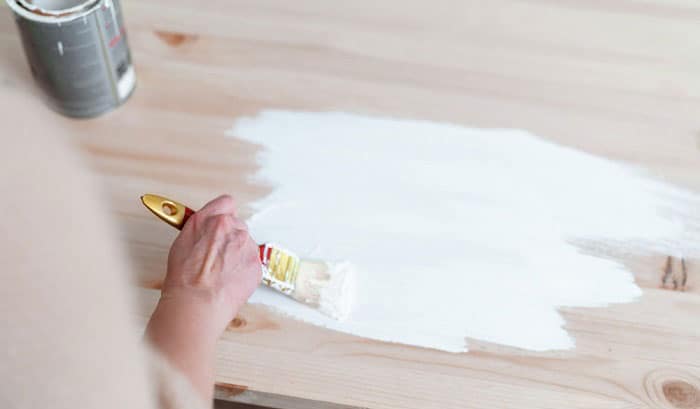
Paint laminated pool table using chalk paint. Followed by the railings and aprons. Apply the second coating when the first coating dried. This gives a smoother finish.
Technically, you may paint a pool table felt to the color you want, however, uneven painting would risk the quality of the playable surface, hence, recoloring the felt or changing the felt is more recommended.
5. Spray Paint Accessories
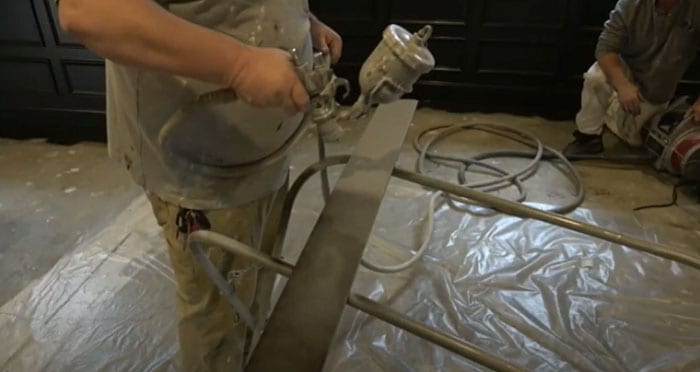
Use spray paint for the pool table accessories like metal pieces, pockets, and trim boards. This makes the job faster and easier rather than using the brush to paint them one by one.
6. Assemble the Parts
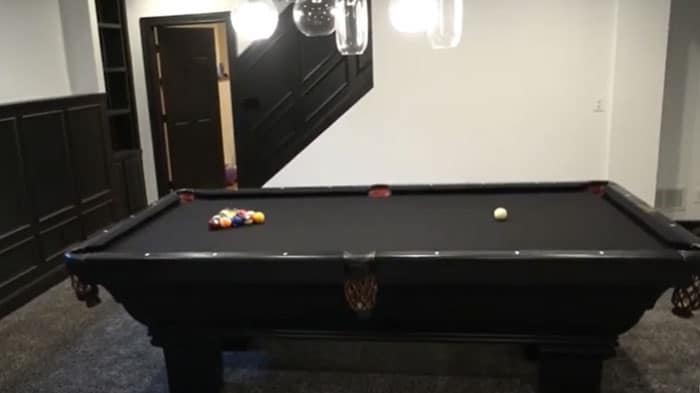
Assemble all the parts together back to their original position. Now, you have your brand new painted pool table.
Frequently Asked Questions
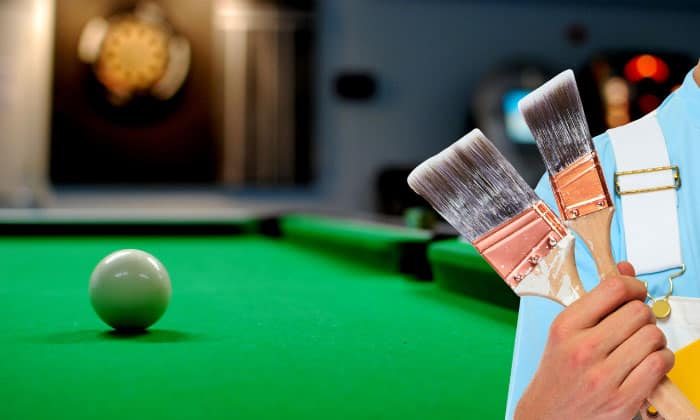
How much does it cost to paint a pool table?
Painting a pool table is far more affordable than buying a new one. The cost would depend on the kind of paint to use, the size of a pool table, and whether you do the painting yourself or ask for the service of a professional.
For DIY preparation and painting, it costs $300 dollars. But for total refurbishing which includes refelting, re-bumping, and painting, the cost could climb to $800.
What are the best colors to paint for a pool table?
There are many colors to select for pool tables to select from but the best colors are still green and blue. The traditional green shade never bores the eyes with its relaxing greenfield like color. Meanwhile, the blue color provides clear movement of balls on televised pool games.
How often should you paint a pool table?
When you play occasionally, you might only need to repaint or re-felt your pool table after 5 – 15 years or so.
However, when you allow food and drinks to soil the playable surface, or people and pets to lie on felt, then it is best to take the advice of a 100-year old billiard handcrafter. You need to paint or stain the pool table every 2 – 3 years to maintain its aesthetic quality.
Conclusion
Cleaning and maintaining a pool table, especially the felt, is crucial in preserving the table’s appearance from deteriorating faster. Using the right materials in cleaning also contributes to the longevity of the pool table surface.
Rejuvenating a pool table is also possible by using paint to bring out a brand-new look for an old pool table. So, can you paint a pool table on your own with confidence? This surely will provide you with more years of enjoyment and entertainment with the pool table.
The post Can You Paint a Pool Table? What Kind of Paint Can Be Use? appeared first on Arthitectural.
